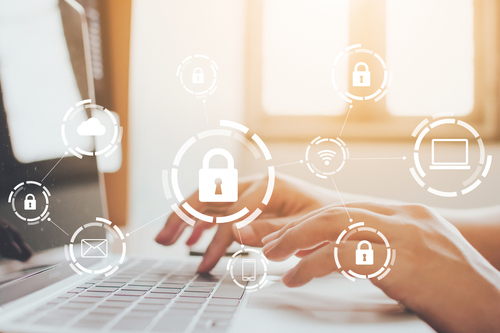Alors que le télétravail se généralise et tend à devenir la norme depuis le début de la crise sanitaire, entraînant une transformation numérique des entreprises et des administrations, l’exposition aux risques de cybercriminalité est accrue. 3 bonnes pratiques permettent de réduire ces risques et de renforcer la cybersécurité. Zoom sur ces protections.
Cybersécurité : l’importance de la communication en entreprise
Pour bon nombre d’entreprises, les procédures mises en œuvre dans un contexte de travail en présentiel ne sont plus applicables depuis le début de la pandémie de Covid-19 et l’essor du télétravail.
Les ordinateurs fournis aux salariés, quand ils ne travaillent pas sur leur matériel personnel, ne permettent pas toujours l’application des contrôles de sécurité qui avaient cours au sein des entreprises. En effet, les systèmes utilisés sont souvent anciens, et les outils de protection contre les cyber-risques ont parfois été déployés à la hâte pour répondre à l’urgence.
Il est donc indispensable pour l’entreprise de faire preuve de pédagogie et de communiquer avec les salariés sur le risque cyber, en utilisant tous les supports disponibles. Une cyberattaque peut avoir de lourdes conséquences et entraîner des pertes financières considérables, de manière directe ou indirecte. Si les données personnelles des clients sont divulguées, nul doute que ceux-ci préfèreront très rapidement se tourner vers une entreprise considérée comme plus sûre.
Plus les équipes sont informées de ces risques, plus elles sont à mêmes d’adopter de bonnes pratiques permettant de renforcer la cybersécurité.
L’intérêt des simulations de cyberattaques
Toutes les informations communiquées aux salariés, si complètes soient-elles, restent théoriques. Les simulations de cyberattaques présentent plusieurs intérêts : elles permettent de faire prendre conscience de la potentielle gravité d’une vraie cyberattaque, et mettent à l’épreuve tant les systèmes informatiques que les réactions des employés.
Ainsi, simuler une attaque de phishing en envoyant un faux mail à toutes les équipes a pour avantage de connaître très précisément le pourcentage de salariés ayant cliqué sur le lien. Autre possibilité : montrer très concrètement comment peut se dérouler un piratage, en demandant aux équipes chargées de la cybersécurité de prendre le contrôle de tous les moyens de communication de l’entreprise.
Pour que ces simulations de cyberattaques portent leurs fruits, elles doivent ensuite faire l’objet d’un rapport d’audit communiqué à tous les employés.
Établir une liste des bonnes pratiques
Une fois les équipes informées et exposées, dans le cadre d’une simulation, au risque cyber, elles doivent savoir comment réagir concrètement en cas de menace, et quelles pratiques adopter pour réduire les risques.
Cette liste de bonnes pratiques doit être largement communiquée, et une procédure doit être mise en place et rendue accessible.
Parmi les pratiques simples à adopter pour renforcer la cybersécurité d’une entreprise, on peut notamment citer la nécessité, pour les salariés, de choisir des mots de passe différents de ceux utilisés dans leurs usages personnels, contenant un minimum de 12 caractères avec des majuscules, des minuscules, des chiffres et des caractères spéciaux.
Il faut également veiller à ce que tous les ordinateurs utilisés dans le cadre du télétravail soient protégés par un antivirus et un pare-feu, et avoir systématiquement recours à des VPN. D’autres mesures, comme le verrouillage automatique des sessions ou encore le chiffrage des disques durs sont également indispensables.
